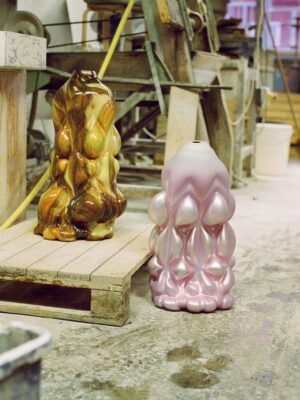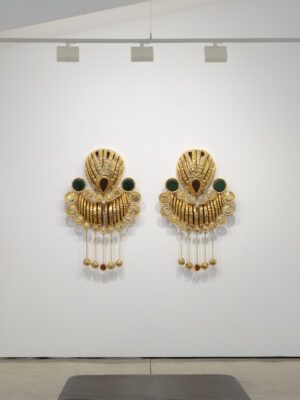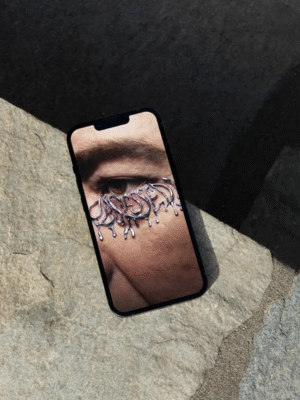In central Laos, 10 km south-west of Phonsavan, thousands of giant sandstone jars can be seen protruding from the rolling hills of the region. Their shape is simple and cylindrical, their lichen-covered facades worn by weather and time. This place is known as the Plain of Jars. Spread across hundreds of square kilometers and dating back an estimated 2,600 years, the megalithic landscape strikes an ancient nerve. Something enchanting, strange, and palpably old hangs in the air. This feeling is perhaps only enhanced by the mystery and speculation surrounding the objects. Some archaeologists believe the jars to be urns; residual tombs from ancient burial sites. Other theories point to the objects as transitory vessels, used during the early stages of funerary rites before cremation took place. Relics such as glass beads, pottery fragments, bones, teeth, ceramic weights, metal tools, and charcoal have also been discovered around the jars.
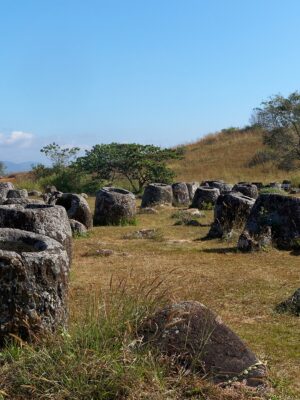
___STEADY_PAYWALL___
While they evoke images of transience and burial, the jars have also, paradoxically, come to symbolise nourishment, gathering, and revelry. Some theories attribute their existence to rice-wine brewing processes and food preservation systems. Others suggest the objects might have functioned as kilns, or used to collect rainwater. Adding to the flurry of interpretation, local legends paint the jars as alcohol containers used by a society of ancient giants living in the mountains around Phonsavan.
A quick dip into the Plain of Jars wormhole reveals a common thread: very little is known about the creators of the jars, or the reason behind their creation. The origin is unchartable. As a result, the jars convey a state of simultaneity and metamorphosis. They come to symbolise processes of decay and disintegration, but also of creation, consumption, and myth. Still, however the jars are read and digested, the idea of transformation remains. Bodies decay, spirits pass from the earthly plane, processes of fermentation unfold, people gather to fill their cups, all within the same curved walls. I think of these jars and it leads me to think of other passageways; the enclosed shapes and spaces that evade capture yet seem to arouse incendiary acts of transformation. Wombs, caves, urns, and cocoons come to mind. Deep wells and underground passages that deviate from the daylight world. Vessels of metamorphosis. While these vessel shapes appear in different historical and archeological contexts, they also continue to crop up in the field of contemporary arts and visual culture. The vessel, it seems, remains to this day a potent symbol of change.
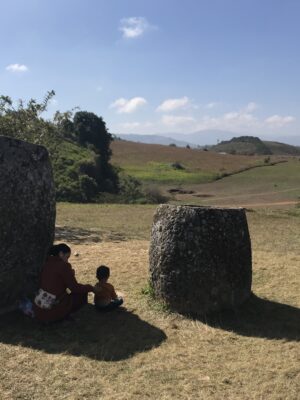
For Rijksakademie Open 2023, visual artist Ai Ozaki presented her work Jars. The work consists of a group of ceramic jars of various shapes and sizes. Some of them have faces. Ozaki uses these vessels to make pickles, packing them full of vegetables and salt. Pressure is added to the mixture with the use of large stones, which rest on top of the jars like headpieces. Moisture seeps from the vegetables, creating a salty fluid that leaks from the (eye)holes carved into the rims. Fermented tears trail down their faces and curved facades. While primarily intended for fermentation, the objects are versatile. According to the artist, they double up as urns; a place to preserve bones, ash, or even bodies.
Standing together, the jars emit a certain stillness. Their ceramic exteriors and poker faces enact a sense of solidity; a serene enclosure in which the soluble nature of things can take precedence. One moment there’s culinary alchemy. Juices flow, microorganisms flourish, people eat and laugh and talk. In another moment, life dissolves. A bone replaces a body. A passageway between the living and the dead is formed.
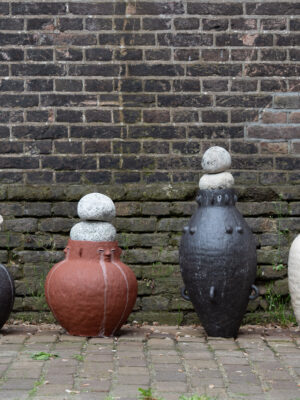
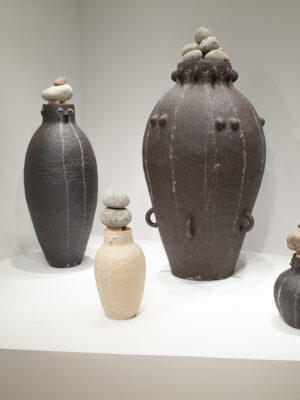
Passageways also appear in the work of artist and sculptor Su Melo. Often working with ceramic, Melo conjures a world of amorphous states and mutating bodies. In sculptures such as Incubate or Yarning, human limbs are swallowed – or sprout from? – bulbous, blob-like shapes. Yarning in particular features a vessel-esque form, a soft enclosure from which two legs extend and kneel. Familiar images are called to mind: amniotic sacs, half-born babies still emerging from the womb, butterflies tearing themselves from the cocoon, bodies taken back into the earth. Melo manages to capture a moment in motion: the liminal space between vanishing and becoming, a shapeless zone of burgeoning transformations and unclear results. Living beings are both absorbed and spit out by these membranes. Processes of birth and recomposition are clearly at play, yet they unravel from the folds of annihilation.
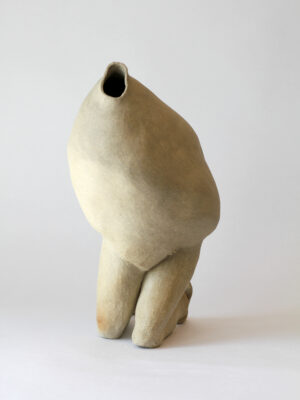
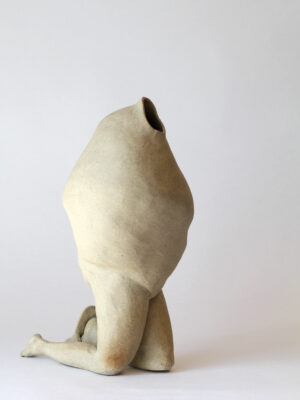
Artist and designer Hanna Hansdotter’s mold-blown glass sculptures seem to exist in a similar state of mutation. By blowing molten glass inside an iron framework, the artist allows it to swell and settle into a bulbous sculptural form. The result is almost volcanic; vase-like objects with voluptuous facades, a glossy mass of orchid-flesh bulging into being. There’s an oozing quality to the work that evokes flesh or magma; a sense of soft materiality in constant flux. Something bubbles beneath the surface. The walls seem to pulse with a life still in the process of becoming. Images of cell division and ameboidal aliens begin to appear as one stares at the slumped silhouettes. As with the enclosures of Ozaki, Melo, and the Plains, a sense of the soluble takes hold. The vessel reveals itself, again, as a signifier of transformations, contradictions, and warped evolutions. Despite their exterior differences and the time between them, vessels emerge – in different ways – as symbols of simultaneity; carriers of blossoming and dissolving forms.
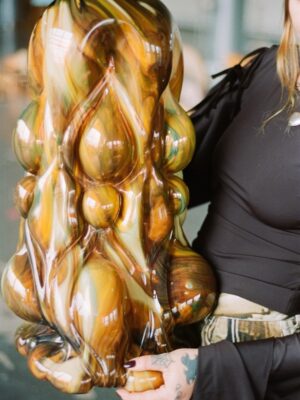
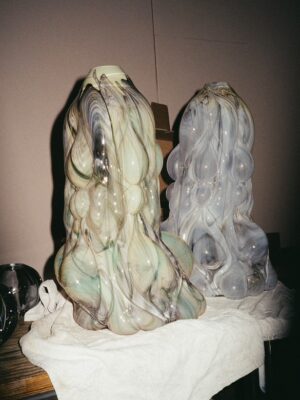
As I write this, I come to think of the new-weird novel Annihilation, written by author Jeff van der Meer. The story follows four scientists as they cross an invisible border into Area X, a mysterious coastal landscape where human relationships to meaning and materiality are quickly diffracted and re-arranged. Soon after crossing the border, the team encounters a strange vessel that descends deep into the earth; an object they refer to as a topographic anomaly. Once inside, they encounter an incantation of sorts – an endless stream of words scrawled onto warm, fleshy walls. A closer look reveals that each word is composed of a spore-spouting fungus. Together they form a hermetic body of text that is at once read and inhaled. One of the scientists – the protagonist of the novel referred to simply as the biologist – attempts to chart the origin of the object and its strange sermon. She follows the line of language a little bit deeper into the earth every time she enters. This results, instead, in the total dissolution of her subjectivity. During her final descent she is consumed by an unspeakable brightness, an electrical sensation that festers in her core until she is left without form. Even in this fictional context, the vessel emerges as a symbol of radical transformation; an uncanny space where defined categories of human and nonhuman might be twisted into a different kind of existence.
To think and work with vessels, then, feels like an invitation to engage with states of permeability. A chance to contemplate our relationship to shapelessness, our shared condition of being and non-being. Across centuries and practices, vessels seem to offer a place to imagine those murky zones; a way to hold them, to feel their dips and curves, to touch the folds of the unknown. Here, definition dissolves into warped and distorted silhouettes. Perhaps it is through forgoing determined states in favor of more porous forms that a passageway for new myths and materialities might emerge. A place where meaning and matter can be re-written and reimagined, time and time again.
Cover image
Hanna Hansdotter • Fading Prints series • Photo by Tine Bek
This year’s theme for our digital publishing is Language. Through a selection of articles we dive into visual languages, the communication of objects, iconography and symbolism. Focusing on story-telling through a lens of aesthetics, we are eager to bring assorted trains of thought to you by twelve different authors. The articles range from speculative to theoretical, chaste to raunchy, past to future, bringing you a variety of voices and perspectives.
This year’s digital publishing features isabel wang pontoppidan as guest editor. isabel is a Danish-Chinese writer, artistic researcher and jewellery maker based in Amsterdam. Her practice is multi-pronged, combining writing, performance, research and jewellery in a variety of overlapping cross-sections.
